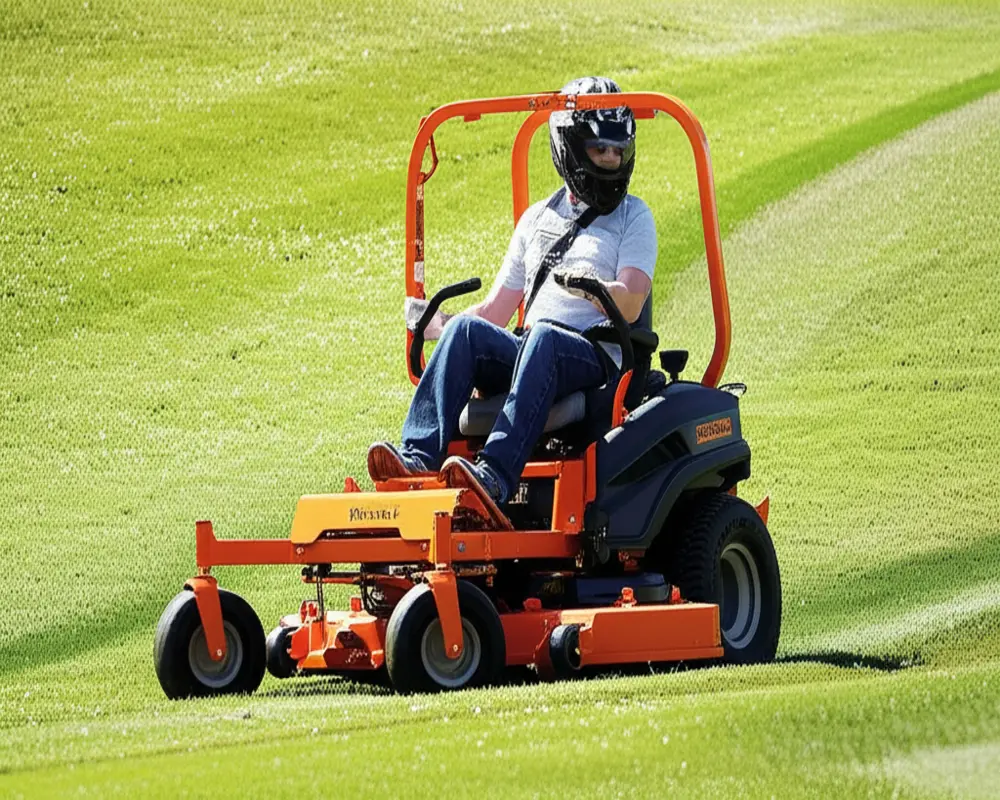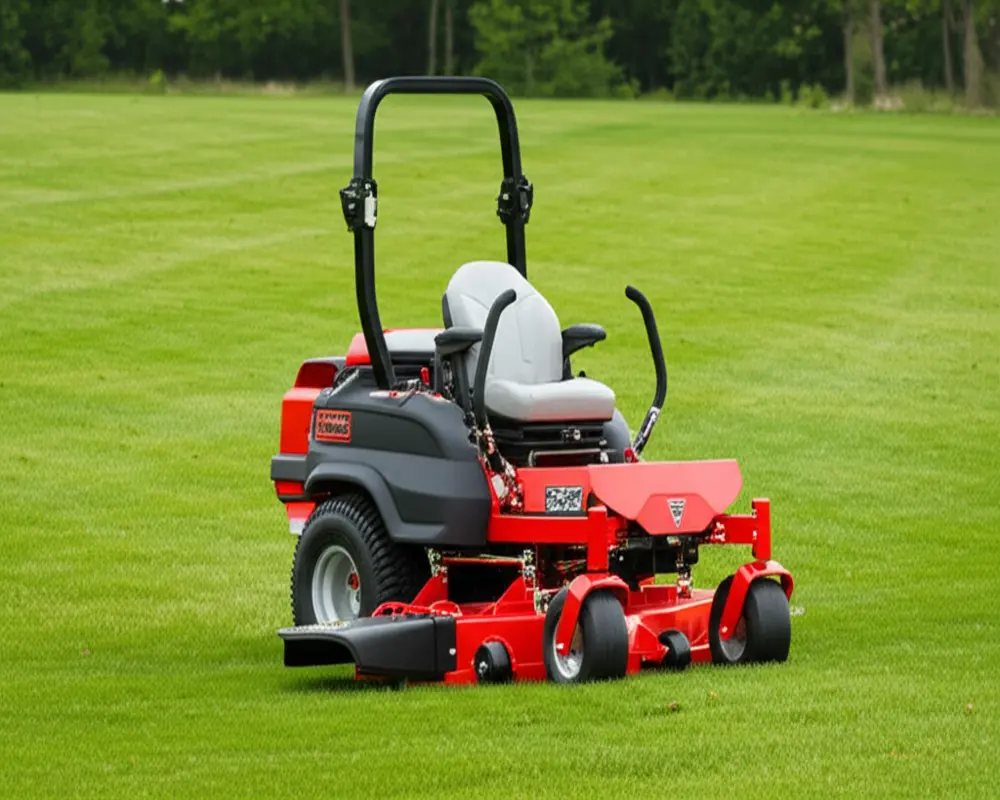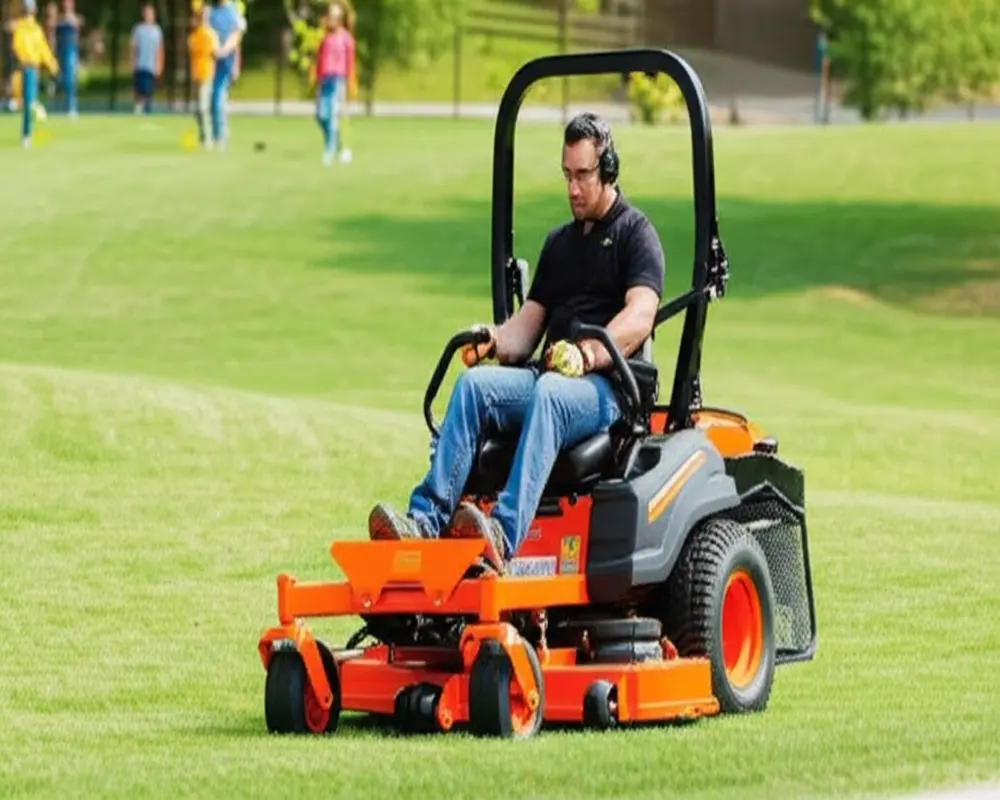Zero Turn Mower Safety: Comprehensive Guide for 2025
Zero turn mowers, often abbreviated as ZTRs, have revolutionized lawn care with their exceptional maneuverability and efficiency. Their ability to pivot on the spot makes them invaluable for tackling complex landscapes and tight corners. However, these features also introduce unique safety challenges that require careful attention and adherence to best practices. This comprehensive guide on zero turn mower safety for 2025 aims to provide operators with essential knowledge to prevent accidents, protect health, and ensure the longevity of their equipment.
Thank you for reading this post, don't forget to subscribe!I. Introduction: Understanding Zero-Turn Mower Safety
A zero turn mower is a specialized lawn mower with a turning radius so tight that it can pivot within its own footprint. This is achieved through independent wheel control, typically via two levers, allowing operators to make sharp turns and navigate around obstacles with precision. While this design enhances operational efficiency, it introduces risks uncommon to traditional riding mowers.
Special safety considerations are necessary because the high speed and agility of ZTRs can lead to rollover incidents, blade contact injuries, and other hazards if operators are not vigilant. Reading the operator manual thoroughly before use is critical, as it contains manufacturer-specific safety instructions and maintenance guidelines.
The primary goals of understanding and practicing zero turn mower safety include accident prevention, safeguarding the operator’s health, and maintaining the mower’s functional integrity over time.
II. Unique Risks & Hazards of Zero-Turn Mowers
Zero turn mowers present distinctive hazards that must be recognized to operate safely. The most significant risk is rollover accidents, often caused by excessive speed, steep or uneven terrain, and abrupt maneuvers. Because these mowers lack the stability of wider wheelbases, operators must approach slopes with caution.
Blade contact injuries remain a serious concern. The mower’s cutting deck houses rapidly spinning blades that can cause severe lacerations. Additionally, the discharge chute poses dangers by ejecting grass clippings and debris at high velocity, which can injure bystanders or damage property.
Thrown objects such as stones, sticks, or small toys can become projectiles, creating a risk to both the operator and nearby individuals. Prolonged exposure to the mower’s noise and vibration can contribute to hearing loss and musculoskeletal strain, necessitating the use of proper protective equipment.
Fuel handling introduces fire hazards, with spillage or improper storage increasing the chance of ignition. Furthermore, bystanders, especially children, are at risk if they enter the mowing area unnoticed.
III. Pre-Operation Safety Checklist
Before each use, conducting a thorough safety inspection is imperative. Begin with a visual check of the mower’s fluids, tire pressure, and blade condition. Confirm that safety interlocks (which prevent operation unless certain conditions are met), ROPS (Rollover Protective Structures), seat belts, and guards are intact and functioning correctly.
Survey the mowing area to remove debris, toys, branches, or other obstacles that might interfere with safe operation or be thrown by the blades. The operator must be alert, well-rested, and mentally prepared for the task at hand to reduce the risk of accidents.
IV. Personal Protective Equipment (PPE) Essentials
Wearing appropriate PPE is a cornerstone of zero turn mower safety. Essential gear includes eye protection to guard against flying debris, hearing protection to mitigate noise exposure, sturdy footwear to protect feet, gloves for hand safety, and suitable clothing to shield the body. Certified safety equipment ensures reliability and compliance with safety standards.

V. Safe Operation Techniques
Starting a zero turn mower requires following specific procedures to ensure control and safety. Operators should familiarize themselves with the controls, which typically include dual levers for steering, throttle, and blade engagement mechanisms.
Maintaining smooth, deliberate maneuvers helps prevent loss of control. Engage and disengage the PTO (Power Take-Off) carefully to avoid sudden blade starts or stops. Speed should be adjusted according to terrain and obstacles, avoiding abrupt turns that may destabilize the mower. Always direct discharged clippings away from people and pets.
Proper stopping involves releasing the controls gently and shutting down the engine following the manufacturer’s instructions to prevent mechanical damage or hazards.
VI. Navigating Challenging Terrain
Mowing on slopes demands heightened caution. Operators should assess slope angles, ideally avoiding mowing on inclines steeper than 15 degrees (approximately 26.8% grade). When mowing slopes, it’s safer to proceed up and down rather than across to reduce rollover risk.
Obstacles such as rocks, tree roots, water bodies, and drop-offs require careful navigation. Uneven ground can cause sudden shifts in balance; therefore, slow speeds and steady control inputs are essential.

VII. Protecting Others: Bystander and Child Safety
Ensuring the safety of others is as important as protecting the operator. Before mowing, clear the area of people, especially children, and pets. Maintain a safe distance from bystanders during operation and never carry passengers on the mower.
Children should be warned to stay away from the mower and supervised if nearby. If someone approaches while mowing, stop the mower immediately until the area is clear again.
VIII. Mower Safety Features
Modern zero turn mowers come equipped with several safety features designed to protect operators. ROPS and seat belts play a vital role in preventing injuries during rollovers by maintaining the operator within a protective zone.

Safety interlocks prevent the mower from starting or operating under unsafe conditions, such as when the operator is not seated or the parking brake is engaged. Discharge chute guards help contain debris, and parking brakes ensure the mower remains stationary when parked.
IX. Maintenance and Storage Safety
Maintenance should always begin with the engine off, keys removed, and blades disengaged to prevent accidental start-up. Use proper tools and wear gloves when handling blades to avoid cuts. Fuel should be stored in approved containers away from ignition sources, and refueling should occur only when the engine is cool.
Cleaning the mower after use prevents buildup of debris that can cause mechanical problems or fire hazards. Store the mower in a dry, secure location to protect it from weather and unauthorized use.
X. Emergency Procedures and Troubleshooting
In the event of a rollover, operators should remain calm and avoid attempting to exit the mower until it has come to a complete stop. An emergency shutdown procedure should be known and practiced, including how to quickly disengage blades and turn off the engine.
If blades become jammed or the mower hits an obstacle, stop the engine immediately before attempting to clear the obstruction. In case of fire, evacuate the area promptly and call emergency services.
Basic first aid knowledge is beneficial, and professional medical assistance should be sought for injuries sustained during operation.
XI. Common FAQs on Zero Turn Mower Safety
Q: Is it safe to mow wet grass with a zero turn mower?
A: Mowing wet grass is generally discouraged as it reduces traction and increases the risk of slipping and rollovers. If necessary, proceed cautiously at reduced speeds.
Q: What is the maximum safe slope angle for operating a zero turn mower?
A: Most manufacturers recommend avoiding slopes steeper than 15 degrees (about 26.8% grade) to minimize rollover risk.
Q: How often should safety interlocks be checked?
A: Safety interlocks should be inspected before each use as part of the pre-operation checklist to ensure proper functionality.
Q: Can attachments be safely pulled with a zero turn mower?
A: Some ZTRs can pull attachments, but only those designed for them and following manufacturer guidelines. Improper use can lead to loss of control.
Q: How do I safely clear a clogged discharge chute?
A: Always turn off the mower and disengage the blades before clearing any clogs to prevent injury.
XII. Conclusion: Commitment to Safety
In summary, zero turn mower safety hinges on understanding the unique features and risks of these machines, conducting thorough inspections, wearing appropriate protective gear, and operating the mower with care and awareness. Adhering to manufacturer guidelines and continually educating oneself on best practices fosters a safer mowing environment.
Safe mowing practices not only protect the operator and others but also enhance the efficiency and lifespan of the mower, ensuring many years of productive use.
For a deeper dive into hand tools that complement your mowing tasks, explore our guide on Hand Cultivator Tines Explained.
For additional authoritative guidance on zero turn mower safety, consider the Safe Operation Guidelines by Iowa State University and OSHA’s Zero-turn Mower Safety Tips.
Consumer perspectives and safety ratings can be found at Consumer Reports – Lawn Mower Safety.

